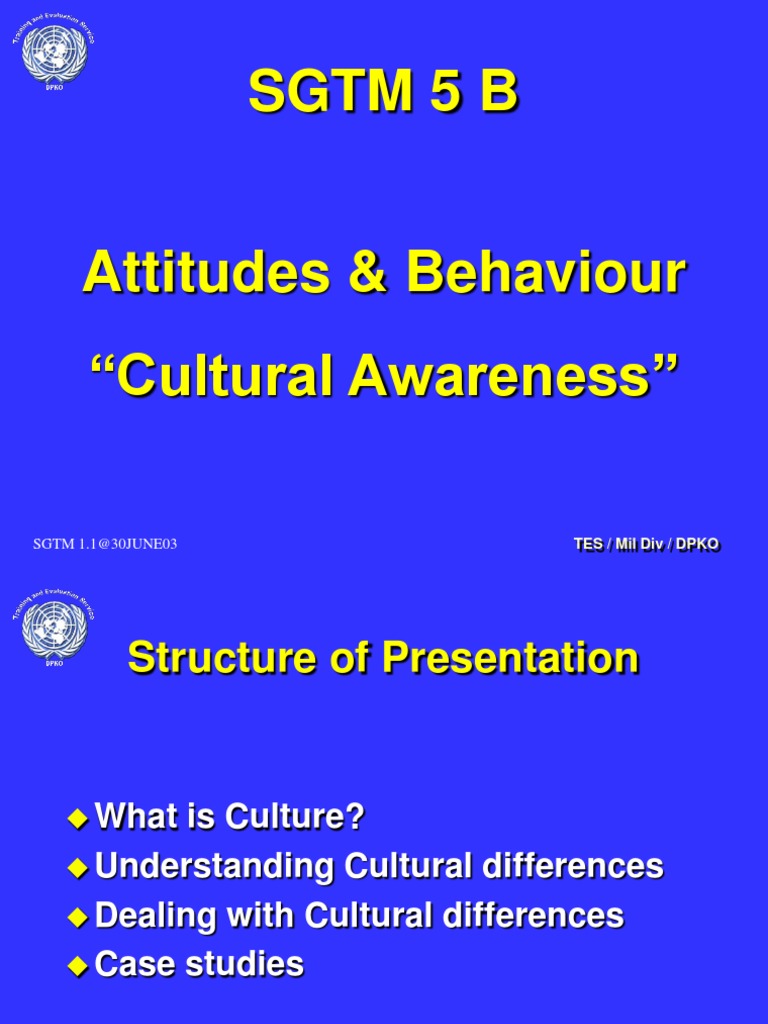In an increasingly globalized world, cultural awareness is essential. A PowerPoint presentation designed to exhibit cultural awareness could effectively fulfill this need by providing insights into varied worldviews, practices, and societal norms. This document delves into the structure, significance, and transformative potential of cultural awareness presentations, aiming to stir curiosity and engender a shift in perspective.
A well-structured cultural awareness presentation typically commences with an introductory slide that sets the tone and context. Here, it is vital to articulate the objectives clearly—what attendees can expect to learn and how this knowledge may shape their understanding of others. It is an invitation to embark on a journey of exploration, wherein every culture represents a thrilling story waiting to be uncovered.
In the next segment, an exploration of the concept of culture ensues. Culture is not merely a tapestry woven from customs and traditions; it is a dynamic, evolving phenomenon that encapsulates the values, beliefs, and practices of a community. The richness of culture can be articulated by venturing into various dimensions: language, art, cuisine, etiquette, and religion. By providing vivid examples from diverse cultures, the presentation not only piques curiosity but also encourages audiences to appreciate the complexity of human identity.
One of the most compelling sections should illustrate the importance of cultural awareness in fostering empathy and understanding. Cultural differences can often lead to misunderstandings or even conflict. Narratives highlighting instances where a lack of cultural awareness resulted in negative outcomes can serve as cautionary tales. Nonetheless, these presentations should also display inspiring success stories where cultural awareness and sensitivity have fostered collaboration, innovation, and unity. These anecdotes illuminate the necessity of viewing the world through a multicultural lens.
Moving from awareness to tangible applications, the presentation can explore strategies for cultivating cultural competence. This segment should introduce practical methodologies, such as active listening, open-mindedness, and adaptability as essential skills in engaging with diverse communities. Engaging with the audience through activities like role-playing or small group discussions could effectively reinforce these concepts, making the content not only pedagogical but also interactive.
Another crucial aspect to discuss is the impact of globalization on cultural awareness. The interconnectivity brought by technology and international exchanges has facilitated a mingling of cultures. However, this also raises pertinent questions about cultural homogenization and the potential loss of unique cultural identities. By embracing a dialogue on this dichotomy, the presentation can stimulate critical thinking among attendees regarding the preservation of cultural heritage amidst the tidal wave of globalization.
Visual aids play a pivotal role in enhancing a cultural awareness presentation. Compelling images, maps, and videos can transport attendees to different corners of the world, gripping their senses and solidifying their understanding. Consider incorporating vibrant photographs of cultural festivities, traditional attire, or culinary practices to evoke a visceral connection to the material being presented. Such sensory engagement is fundamental in transforming abstract concepts into personal experiences.
As the presentation progresses, it would also be prudent to address the phenomenon of stereotypes and their deleterious effects on society. Educating attendees about the pervasiveness of stereotypes can be invaluable. By dismantling these oversimplified and often pejorative assumptions, audiences will be better equipped to navigate the complexities of cultural interactions more thoughtfully and respectfully.
The presentation should also emphasize the role of cultural awareness in the professional realm. In today’s multicultural workplaces, understanding and embracing diversity is paramount for fostering a collaborative environment. Companies that prioritize cultural sensitivity not only enhance employee morale but also unlock the potential for innovative ideas and solutions derived from diverse perspectives. This economic paradox should compel attendees to re-evaluate their own approaches to diversity, equity, and inclusion in their professional lives.
To conclude, a cultural awareness PowerPoint presentation can be a powerful catalyst for change. By inviting individuals to challenge their preconceived notions and expand their horizons, such presentations promise not merely to inform, but to transform. The ultimate aim is not to advocate for a singular narrative but to celebrate the multitude of stories that define humanity.
In embracing cultural diversity, we can forge deeper connections, appreciate distinct perspectives, and craft a more inclusive and harmonious society. As attendees depart from the presentation, armed with new insights and perspectives, they will be better positioned to engage with the world around them in a more meaningful way.
The essence of cultural awareness lies not only in knowledge but also in the willingness to engage with, learn from, and adapt to the rich tapestry of cultures that coexist on our planet. The promise is profound: it is a call to transformation, an invitation to broaden horizons, and ultimately, a plea for a more empathetic world.
